 Popular Issues & Fixes
Popular Issues & Fixes Engine
Engine Tyre
Tyre Body Work
Body Work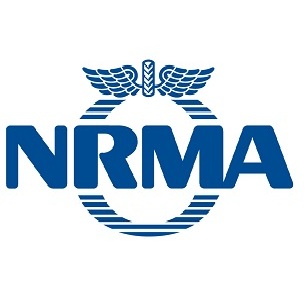 NRMA & Repairers
NRMA & Repairers Car Safety Facts
Car Safety Facts Guessing Games
Guessing Games Glossary
Glossary Popular Issues & Fixes
Popular Issues & Fixes Engine
Engine Tyre
Tyre Body Work
Body Work NRMA & Repairers
NRMA & Repairers Car Safety Facts
Car Safety Facts Guessing Games
Guessing Games Glossary
Glossary
An example of a ticking Noise for comparison:
Car trouble symptoms: Ticking noise in engine is obviously heard while the engine is running. The ticking sound in engine can be observe during idling or when the vehicle is in operational. It also sounds like tapping noise in engine that can easily be notice when the engine runs.
Car problem diagnosis: Engine ticking noise while it is running is an indication of an engine that is not fully lubricated. There are two common reasons why an engine becomes not fully lubricated. One is that the engine lacks oil and the other one is that the oil pressure inside the engine is very low.
Now, lets find out which of the two possible reasons is causing the engine ticking by doing the following.
Check the Engine Oil Level
Locate the dip stick for the engine oil to check the oil level, if the oil inside the engine is not sufficient then the ticking noise you heard from the engine is cause by a poor lubrication of the engine. However, if the engine oil is enough base your observation of the dip stick then it does not lack engine oil in this case you have to proceed with the next diagnosis which is checking of the oil pressure.
Check the Oil Pressure
You have to find out if the oil pressure inside the engine is enough and the first step to do this is to observe the oil warning light located in the car dashboard. If the oil warning light comes on while the engine ticking occurs, then in this case a poor engine lubrication also causes the problem. Oil pressure is an indication if the car engine have sufficient amount of engine oil, if the oil pressure is sufficient the entire car engine key components can received an ample amount of engine oil, but if the oil pressure is low a certain engine component do not received an ample amount of engine oil therefore it can cause the ticking noise or tapping noise in engine.
Now what causes the oil pressure to become low? The most possible reason is a faulty oil pump.
However, if the oil pressure is enough then the engine has a sufficient amount of engine oil. If this is the case then the problem is cause by a loose valve or leaking exhaust manifold.
That kind of problem can also cause a similar ticking noise, a loose valve slap against the rocker arm while the engine runs thus causing a ticking noise. Leaking exhaust manifold causes the exhaust gases to leak thus causing a ticking sound on the engine.
Auto diagnose caused: Base on our diagnosis the ticking noise can be caused by a poor Engine lubrication, loose valve or leaking exhaust manifold
Car Shop advice:
Poor Engine Lubrication
When the problem is poor engine lubrication which causes by the lack of engine oil, just add oil on the engine then check the dip stick again if the amount of oil you added is sufficient, however if the oil inside the engine is low then you have to bring the car to the car shop. Tell the mechanic about your diagnosis and ask the mechanic to check if the oil pump is faulty including the oil pan if it is clogged.
Loose Valve or Leaking exhaust manifold
When the problem is a loose valve or leaking exhaust manifold you also have to bring the car shop to determined which of them causes the problem why there is ticking noise on the engine while it runs. This might only be a simple case of tightening the valve, provide that the car has adjustable valve.
Car trouble symptoms: Your Car engine performace is weak on uphill driving, however car engine performance is normal on the flat road.
Car Problem Diagnosis: When a car engine is weak in power this only means the engine is low in compression, this is noticeable especially when driving uphill because the engine is under a lot more stress on this condition. Since the engine is low in compression, worn out rings or valve is the most likely cause of having a weak engine performance.
Auto diagnose caused: Worn rings or Valves
Auto specialist advice: Bring your car to a reputable auto repair shop and ask the mechanic to check for the rings or valve by means of a wet compression test to verify if it is already worn out. If the mechanic confirms that the rings or valve is worn out then youíll be facing a very expensive repair, if this is the case seek first a second opinion before you agreed on the mechanic to proceed with the repair. The above car problem diagnosis only suggest the most likely cause of weak engine performance, it may also possible that there are another cause of the problem such as a faulty electronic sensor, in any case a 2nd opinion can help you decide if you want to proceed with the repair so that your car engine performance returns to normal.
WARNING!: do not touch anything in your engine
bay until the steam has cleared out, to remove your radiators cap
please use a thick rag to avoid any burns.
How to Check and Add Radiator Fluid:
How to change your cars Radiator fluid:
If your cars overheating issue is still persissting after the
above two steps then the issue could possibly be located within
a computer sensor in your engine or another region entirely.
Please contact a local repairer to come out and look at your
vehicle, driving it in its current state could do mass
damage.
Diagnosing car engine problems symptom: When you have a fuel injection car that constantly hesitate and even jerks while you accelerate.
Car problem diagnosis: Constantly jerking of car during acceleration is cause of a bad throttle position sensor, as you can see fuel injected engines have throttle position sensor, the purpose of this is to device measures how far you depressed the gas pedal, while depressing the gas pedal the throttle position sensor sent data to your car engines computer system. The engine computer calculates the data and the result determines how much gas fuel the fuel injection should inject into the car engine. Therefore with that said, if the throttle position sensor is faulty it will affect the injection of gas into the engine in which will result in a hesitant of your car when accelerating and even makes your car to jerks.
Auto diagnose caused: Bad throttle position sensor
All about auto zone advice: To fix the problem you need to bring the car to a reputable auto repair shop that specialized in fuel injection engine and ask the mechanic to check the throttle position sensor to confirm that this is the cause of the problem, explain to the mechanic about your car diagnostics result.
Common Issues: when your car isn't starting it is normally not one direct issue that is the cause of the problem. The following articles are the most general and common faults that cause your engine to not start.
If your "check engine" light illuminates don't react like one Connecticut motorist, who simply poured an extra quart of engine oil into her 2002 Toyota Corolla. Although extreme situations, such as low oil pressure or an overheating engine, might trigger a "check engine" light, your dashboard has other lights and gauges to warn you about those problems and probably a lot sooner. The best advice is to read your owner's manual beforehand and learn the purpose of the "check engine" light and every other gauge and warning indicator on your dashboard. Periodically, you also should test the "check engine" light and other dashboard warning lights. Usually, you can do this by turning the key to the key-on/engine-off position. Consult the owner's manual for more information. Replace any bulbs that aren't working.
If the "check engine" light illuminates, it will either blink or remain constant, depending on the problem. Either way, you should have the vehicle checked by a mechanic, although a blinking light or, on some cars, a red light instead of a yellow/orange light indicates a problem that needs immediate attention. In late-model cars, a blinking light usually indicates an engine misfire so severe that unburned fuel is being dumped into the exhaust system, where it can quickly damage the catalytic converter, requiring an expensive repair. If that happens, you should reduce power and have the car or truck looked at as soon as possible. If the light is steady, the problem is not an emergency, but you should schedule an appointment as soon as possible. Today's automotive computers often try to compensate when there's a problem; so you may not notice deterioration in performance, even though your fuel mileage is suffering and your vehicle is emitting unacceptable levels of hydrocarbons and other pollutants.
"The customer is really, in the long run, potentially hurting their pocket book by leaving that light on and ignoring it," says Jim Collins, a national training team leader for Ford Motor Company. In some extreme cases, the car's computer may reduce power for you, as it tries to limit the risk of damage.
If the check-engine light comes on, here are some tips on what you should do:
Look for a serious problem that requires immediate attention. Check your dashboard gauges and lights for indications of low oil pressure or overheating. These conditions mean you should pull over and shut off the engine as soon as you can find a safe place to do so. On some cars, a yellow "check engine" means investigate the problem, while a red "check engine" means stop right now.
Try tightening your gas cap. This often solves the problem. Keep in mind that it may take several trips before the light resets. Some vehicles have a separate indicator that warns of a loose gas cap before the condition sets off the "check engine" light.
Reduce speed and load. If the "check engine" light is blinking or you notice any serious performance problems, such as a loss of power, reduce your speed and try to reduce the load on the engine. For example, it would be a good idea to stop towing a trailer. Have the car checked as soon as possible to prevent expensive damage.
Contact OnStar, if available. If you have a 1997 or later General Motors vehicle equipped with OnStar and an active OnStar subscription, contact an advisor who can read the trouble code remotely and advise you about what to do.
Have the code read and the problem fixed. If you want to diagnose the malfunction yourself, you can buy a scan tool at most auto parts stores. Prices range from about $40 to several hundred, depending on the model and the features. The tools come with instructions on how to hook them up and decipher the codes. But unless you have a good knowledge of automotive diagnostics, you're probably better off taking the vehicle to a professional. Some automotive parts stores will read and interpret the code for you without charge. Unless there is an easy fix, they may simply refer you to a mechanic.
Don't go for a state emissions test. In a late-model car, an illuminated "check engine" light probably is a sure sign your car will fail the test. In some states, it's an automatic failure, even if the problem was nothing more than a loose gas cap. By the way, don't bother trying to fool the inspection station by disconnecting the battery or using any other method to erase the trouble code and turn off the "check engine" light. Your vehicle's computer will let the inspection station know that its codes have been erased, and you'll just have to go back again.
Diagnosing car engine problems symptom: The car stall while idling, however when the gas pedal is depressed, the car will continue running.
Car problem diagnosis: When a fuel injected car stall while idling, but will continue to run when the gas pedal is depressed just about when the engine will stall can only cause a faulty idle air by pass valve. Idle air bypass valve can be found on a fuel injected cars, this device is the one that maintains the idle speed on the car engine. When this device is faulty it will make the engine to stall, however when the gas pedal was depressed it increases the throttle which in turn give the engine just enough fuel to stay running.
Auto diagnose advice: Faulty idle air bypass valve
All about auto zone advice: Bring your car to a reputable auto repair shop and ask the mechanic to check the idle air bypass valve to confirm that it is indeed the problem, if the mechanic says that you have a faulty idle air bypass valve then you do not have any option but to replace the parts, however if the mechanic wants you to replace others parts, tell the mechanic that you need to observe first the performance of your car and return some other time for the replacement of other parts if necessary.
Diagnosing car engine problems symptom: While on the idling condition, the car will stall but will continue to run when the gas pedal is depressed.
Car problem diagnosis: When carbureted engine stall while idling but will continue running if the gas pedal is depressed while the engine is about to stall, is an indication of a too low idle speed. All carburetors on a carbureted engine has an idle speed screw, this device set the idle speed of the engine to slow, normal, or fast idle. If the idle speed screw was set too low than normal the engine will stall. This is evident as the engine will continue to run when you step on the gas pedal, this will give the engine more gasoline to continue running.
Auto diagnose caused: Idle speed is too low
All about auto zone advice: To fixed the problem, the first thing to do is to set the idle speed screw higher, the next thing is to determine why the idle speed becomes low, if your car has been previously worked on, the mechanic might have set the idle speed low because usually speed idle screw donít unscrew without having someone messed up with setting.
Car symptoms: Car stalls when engine is hot or the temperature is abnormally hot while driving.
Car diagnosis: When the car stall if the engine is abnormally hot, this often cause by a vapor lock occurred on the engine. Vapor lock happens when a gas going to the engine starts to boils before it reaches the combustion chambers, when the gas boils an air bubbles is produced which then causes the air/fuel ratio to have too much air and not enough gasoline in this case the ratio is weak and not enough to cause the engine to stay running. Vapor lock is triggered by an extremely hot engine.
Car problem diagnose: Vapor lock
All about auto zone advice: When your car engine stalls while driving on extremely hot engine, or weather probably you encounter vapor lock. In this case no other option but to wait for the car engine to cools down before continue driving, also bring the car to a reputable auto repair shop for inspection and determine why the engine gets extremely hot. One reason for the engine to become extremely hot is by having a cooling system problem. Have it check to confirm that it causes the engine to become hot and avoid vapor lock problem that causes your car to stall when engine is hot.
Car trouble symptoms: Car jerking when accelerating to gain speed.
Car problem diagnosis: When the car jerks when accelerating occurs when the temperature is cold or the engine is cold, then this indicates a problem on the distributor cap. The problem happens because moisture is formed inside the distributor cap during the night when the weather is cold or when itís raining. The moisture that forms will cause the engine to misfire thus engine power becomes uneven and the car will jumps when accelerating.
However, when the problem occurs gradually and everyday passes it becomes worst then the possibilities is that there is problem of vacuum leak. Vacuum leak start small then become worst gradually because of the pressure inside the engine, the vacuum is one of the key factors in determining how much fuel is needed by the engine, if there is a vacuum leak the air/fuel mixture will not be in the right proportion thus making the car jerks when accelerating.
Another possible cause is a bad throttle position sensor, this will be the cause if the problem occurs at any engine temperature and if you encounter the problem constantly since the time you start noticing it but this is only possible for fuel injected vehicle. Throttle position sensor is a device that measure the distance of the accelerator pedal from its original position when you depressed the pedal. The reading of the throttle position sensor will be transmitted to the car computer system to determine how much fuel is injected by the fuel injection system into the car engine. If the throttle position sensor is bad then the data that it will send to the computer will be wrong and will affect how much fuel will be injected inside the engine thus making the jerk during acceleration.
Car diagnose trouble: Problem on the distributor cap, vacuum leak or bad throttle position sensor
All about auto tips: Moisture forming inside the distributor cap can be avoided by parking your car inside the garage especially when raining or when the weather is cold. As for the vacuum leak, no other option but to bring the car to a reputable auto repair shop and ask the mechanic to check your car for vacuum leak the parts to be checked is the EGR and the PCV valves. If the problem is the throttle position sensor, likewise bring the car to auto repair shop and ask the mechanic to check the throttle position sensor. The solution will depend on which of the three causes mentioned above is the problem of car jerking when accelerating can be fixed.
Car trouble symptoms: When trying to start the car wonít start and the car engine backfires.
Car problem diagnosis: When the car wonít start possible reason is the following
If the problem only occurs during or after raining, then the possible problem is moisture on the distributor cap. Moisture results from the humidity in the air, if the distributor cap contains moisture, this will interfere on the ability of the ignition system to operate properly and will result to engine backfires.
When the problem occurs at any conditions, the possible cause is a timing problem. To confirm that this is the cause, open the hood of the car then inspect the timing belt. If the timing belt is broke or damage, then this causes the problem. When the belt is damage it can make the engine timing off, which can be resulted to engine to backfire.
All about auto zone advice: If the problem is about the moisture on the distributor cap, no other option but to keep your car park on a dry place (shaded area) when a rain is anticipated. As for the timing belt problem, have your car towed to a reputable auto repair shop and ask the mechanic to replace the timing belt, but before you do shop around for a shop that can offer the best price because this kind of job can also entails high cost. However, to reduce repair cost you can try replacing the timing belt yourself, just refer to the service manual that covers your car model.
When there is engine misfiring on one or more cylinders the engine balance will be thrown off. When this happens each cylinder inside the engine is not firing correctly and this can cause the engine not to run smoothly. An engine with cylinder that is not firing correctly creates excessive engine vibration that when become extreme can also cause the shaking on the entire car.
Several reasons can cause the engine to misfire, however the most common reason based on the car shop experience is a bad spark plugs or bad spark plug wires, also a worn distributor cap is likely to cause such problem of engine misfiring. If any of the reasons mentioned above happens on the car, it can affect the air/fuel mixture inside the engine cylinder.
Another cause of engine misfiring but is rare to happen is a burned valve. As you may not know, an engine with burned valve can cause the affected cylinder improper engine compression which can be resulted to an engine misfiring.
The car shop advice:
When your car suffers engine misfiring, the first thing to do to fix the problem is to replace the spark plug and the spark plug wires, usually just by replacing those parts will solve the problem. However, if engine misfiring continues to happen the next thing to do is to replace the distributor cap. You can find those parts available at any auto shop.
When you follow the recommended car maintenance schedule by your car dealer then you can avoid this kind of problem to occur because maintenance tune up covers those three items when you subject your car for maintenance. You can also find the routine schedule of maintenance on your car ownerís manual or warranty booklet so can have an idea on when to bring the car to hop for maintenance.
If the problem still exist then no other option but to check the valve, the possibility is that the car has burned out valve and you have to bring the car to shop for the mechanic to inspect the valve then repair if necessary. It should fix the engine misfiring since itís the last option you have.
Car trouble symptoms: The engine is rough on idle during start up.
Car problem diagnosis: When the engine is rough on idling it is an indication of cylinder misfiring. There is misfiring on one or more cylinders that cause unbalance, in turn resulted to rough idle of the engine.
The problem here is not the rough idling but rather why the engine misfire, there are several reasons why the engine misfires and it is difficult to test, however there are two common reasons why there is misfiring on the engine. First one is a vacuum leak and the other is a bad sparkplug wires. Another reasons but is rarely happens and happens only to old cars or those cars that have high mileage, that is a burned valve or the valve is out of adjustments, if this happens to the engine the affected cylinders will have low compression, when the engine has low compression a misfiring will occur on the affected cylinder.
However, when the car is fuel injection system the usual cause of misfiring is a clogged fuel injector, when the injector is clogged the affected cylinder will be starved of fuel which can then cause the engine to misfire and will result to rough idle which can easily be notice during start up.
Car problem cause: Vacuum Leak or Bad spark plug/wires, for fuel injection engine it is a clogged fuel injector.
Car servicing advice: When you notice your engine to be rough on idle the first thing to do is to replace the spark plug and the spark plug wires, usually by replacing this parts the problem can be solved. If you do not know how to replace the spark plug/wires, refer to the car ownerís manual but if youíre not sure about replacing the parts by yourself then bring the car to a shop then tell the mechanic about your diagnosis and ask to check the spark plug/wires to confirm that it is really the cause of the rough idle and replace the parts to fixed the problem.
If that does not solve the problem the next thing to look at is the vacuum leak. If your car is fuel injectors ask the mechanic to check the injector for any clogging and repair if necessary.
Engine problem symptom: There is a blue smoke comes out the car exhausts, also there is a power loss when driving uphill.
Car problem diagnosis: Blue smoke that comes out the exhaust is an indication that the engine is burning oil. Therefore the problem is that, why the engine is burning oil?
Also, the car is less in power when driving on an uphill, with this kind of car problem symptoms that is accompanied by a blue smoke that comes out the exhaust, this only means that the problem involves a bad rings. Rings on the engine prevents the oil from entering into the engine combustion chamber, when the rings are bad oil starts to enter the combustion chamber and burns that is why there is blue smoke that comes out the exhaust, also rings maintains compression on the engine, likewise if the rings is bad this can cause weak compression, compression is important so that the engine can generates power, that is why when the compression is weak engine power is also weak.
Auto diagnose cause: Bad rings
All about auto zone advice: Bring the car to a reputable auto repair shop that specialized in engine repair. Ask the mechanic to conduct wet compression test to confirm if the engine has a bad rings. When the problem of bad rings is confirmed, expect a costly repair. However if your car is under warranty then you have nothing to worry about a costly repair, you can also consider an option of replacing with a new engine if it is much cheaper compare to a ring job.
What causes white smoke from exhaust of car?Does white smoke means problem or just a normal phenomenon that happens on every car. Several reason can cause white smoke from exhaust depending on the when is the smoke was detected you can tell that there is problem. When it happens just before the engine has warmed up then itís normal otherwise it means trouble.
Car trouble symptoms: White smoke from exhaust of car occurs while the engine was running at any engine temperature such as cold, warm, or hot after the engine has warmed up.
Car problem diagnosis: When a white smoke occurs while the engine is cold, warm or even hot after the engine has warmed up or when the engine reach the normal operating condition then we can safely say that there is problem with your car, the symptoms you have encountered only indicates a problem on the head gasket, probably the gasket may have ruptured or has crack somewhere.
What is the relation of the head gasket to the white smoke that comes out the tail pipe?
Well, all car engines does have head gasket and the purpose of the head gasket is to keep the water from entering inside the engine combustion chamber. You may already know that engine has water circulating around as water jacket and serves as coolant to keep the engine temperature within the normal level when the engine operates.
Now, as the water circulates around the engine it must be keep outside the combustion chamber. The job of the head gasket is to seal the water from flowing inside the chamber. But because of wear the gasket for a certain period of time may develop small crack which is just enough for the water to penetrate and leak inside the combustion chamber, the same water will be burned once it get into the chamber and become steam. The steam that is produced will then flow out the exhaust manifold into the muffler and out the exhaust pipe, and the same steam is the white smoke you notice coming from the exhaust.
Car problem cause: Damaged head gasket causes white smoke.
Car shop advice: Fixing this problem is easy just replace the damaged head gasket with a new one, however doing the replacing job of the gasket is the harder part and should be done by professional. Therefore you have to bring the car to a reputable shop for servicing and does the replacement job for you. When at the car shop explain to the mechanic what your diagnosis is as cause of the problem and ask to replace the head gasket and nothing more, it is important that you know about the problem so that you will not be misled by the mechanic. You can buy the replacement parts in any auto shop, so better to shop around for the beast price before buying the parts. Remember just replace the head gasket and nothing more, this can solve your problem of white smoke from exhaust of your car.
Text Version of Steps:
1. Park your car on a flat surface. If you get a flat while on the road, pull your car as far away from traffic as possible . Make sure to put on the emergency brake. Itís also recommended to put a block on the tire opposite of the flat tire. Put to use that fruitcake from Aunt Gertie youíve been toting around in the trunk. Hereís a blocking example: if your right rear tire is flat, put the block on the front left tire.
2. Remove the hubcap. If your car has a hubcap, remove it so you can get to the lug nuts. Use the hubcap to hold the nuts, just like the dad in A Christmas Story. Just donít let your kid hold the hubcap or heíll lose them and drop the F-bomb.
3. Loosen the nuts. Grab your lug wrench and place it on the flat tireís lug nuts. Loosen them up by turning them counterclockwise. The nuts are probably on there really tight, so youíll have to use all your man strength to unscrew them. Loosen the nuts a few turns, but donít take any of them off yet!
4. Place the jack underneath your car. Check your ownerís manual for the correct placement of the jack. Turn the hand crank at the end of the jack to raise the jack until it comes into contact with your carís frame. Make sure itís touching a sturdy spot.
5. Jack it up! Start cranking the jack until the wheel is high enough above the ground to remove the tire.
6. Remove the flat. Remove the lug nuts from the wheel. You should be able to do it by hand because youíve already loosened them. Remove the flat tire and lay it flat. You donít want the wheel to roll into traffic during rush hour and cause a thirty car pile-up.
7. Slap on your spare. Take your spare tire and line up the lugs, or bolts, with the holes in the wheel and slide the wheel on. Once the wheel is on, take your lug nuts and tighten them by hand until you meet firm resistance.
8. Lower the car. Lower the jack until the wheel is firmly on the ground.
9. Finish tightening your lug nuts. These babies must be on super tight so the wheel doesnít come flying off while driving to the tire shop to get the flat fixed
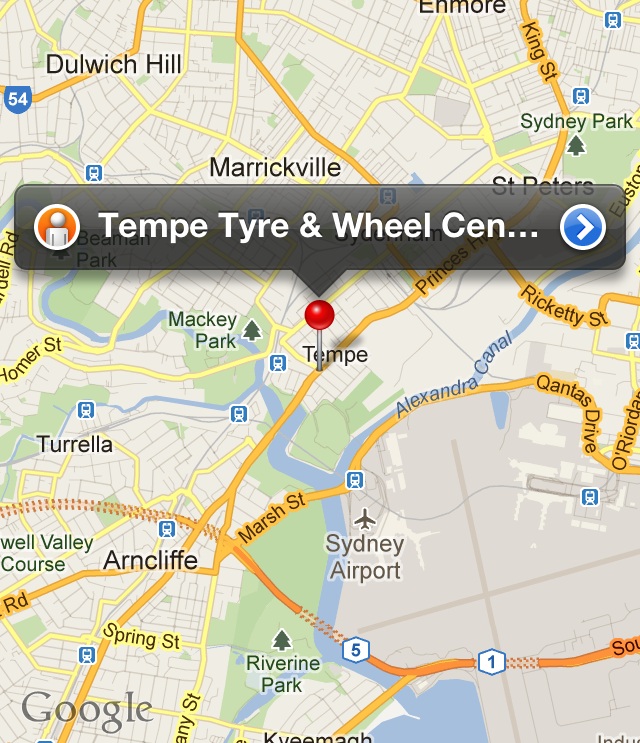
The following section walks you through treating your cars Flaking or Peeling paint using the correct methods.
Text Version of Steps:
For typical paint jobs, here is an example of the steps for something that has been stripped to bare metal:
The following section walks you through treating your cars scratched paint using the correct methods.
Text Version of Steps:
The following section walks you through buffing your cars paint using the correct methods.
Text Version of Steps:
Note: Before you get started if you are using a wool pad mist with water so pad is damp, then rub several times to remove lint. Repeat.
Choose a professional variable speed buffer with a way of changing the maximum speed. Set the buffer for the speed recommended by the manufacturer of the compound or polish you are using. When buffing, it is a good idea to keep the cord over your shoulder so it does not get in your way. First, apply a small amount of the compound or polish to the pad and surface. Then with the buffer turned off, spread compound or polish over the area you will be buffing. This will prevent the compound or polish from splattering over other areas.
You are now ready to turn the buffer on and begin. We recommend buffing an area no larger than two square feet at a time. Use a back and forth motion. Do not use a circular motion. Overlap each pass by 50%. Keep buffer as flat as possible. Do not let product become dry or it will cause heat that may burn the paint. When the panel begins to shine move to the next area. When you have finished applying product, remove the excess film with a clean soft polishing cloth.
As a final step, you may apply a high quality wax only if this is an oem finish. If the area has been repainted you can not use wax for 30 to 45 days. In this case use a hand glaze to get that swirl-free high gloss look.
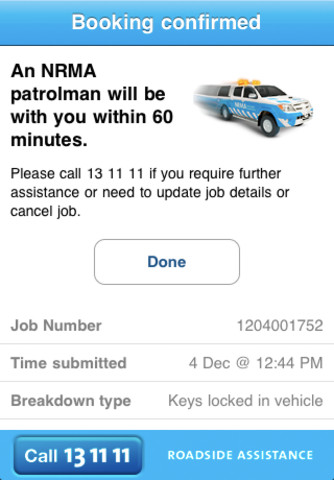


Fuel Injected Engine Stall on Idle
Carbureted Engine Stall on Idle
The action sequence photograph shows the path of the white car after the driver rapidly turns the steering wheel to avoid the car suddenly appearing from the right .With the aid of VSC, the white car maneuver and is able to quickly return to its original lane.
 Turning the steering wheel sharply to avoid something or entering a curve on a slippery road can cause a vehicle to go out of control and slide sideways.
The Vehicle Stability Conntrol system or VSC helps in such situations by quickly detecting the vehicles instability and controlling the slide, allowing the driver to maintain control of the wheel.
VSC does not eliminate the danger of accidents! It can assist with vehicle stability up to a point.
If you recklessly drive too fast into a sudden curve, for instance, even a VSC-equipped vehicle will not be able to save you from a possible injury resulting from loss of control of the vehicle.
If the VSC warning buzzer (intermittent type) sounds or the skid indicator light begins to flash, please drive extra carefully!!!
Turning the steering wheel sharply to avoid something or entering a curve on a slippery road can cause a vehicle to go out of control and slide sideways.
The Vehicle Stability Conntrol system or VSC helps in such situations by quickly detecting the vehicles instability and controlling the slide, allowing the driver to maintain control of the wheel.
VSC does not eliminate the danger of accidents! It can assist with vehicle stability up to a point.
If you recklessly drive too fast into a sudden curve, for instance, even a VSC-equipped vehicle will not be able to save you from a possible injury resulting from loss of control of the vehicle.
If the VSC warning buzzer (intermittent type) sounds or the skid indicator light begins to flash, please drive extra carefully!!!
SRS Air bag is meant to functions on severe frontal collisions, the speed of its deployment may vary depending on the vehicle model. It deploys in a severe frontal collisions from the oblique right or left, when the collision posses a serious threat of injuries to occupants.
The oblique angle must be under about 30 degrees for deployment.
SRS airbag inflates extremely rapidly that sometimes may result in an abrasion and bruising of the occupant during contact.
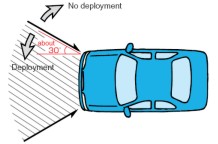
SRS Air bag deploys in the following conditions.
Moment of impact in a 20-30 km/hr front collision with a solid, immobile concrete wall.

Moment of impact in a 30-35 km/hr front collision with a solid immobile concrete pillar.

Airbag may also be activated when a strong impact underneath a vehicle happened

When a vehicle collides with a deformable mobile object, the vehicle velocity of airbag deployment will be higher since the impact of the collision will be reduce.
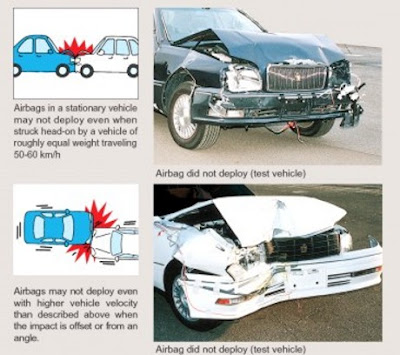
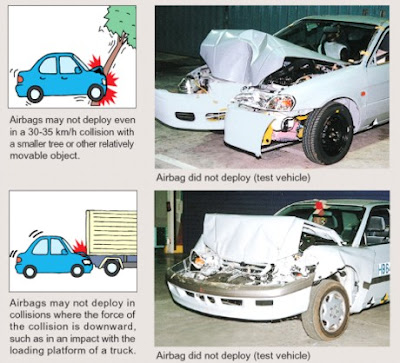
In emergency situations, sometimes when we press on the brake pedal the pressure that we exert is insufficient, that's where the brake assist comes in. Brake assist helps in such situations by applying full braking force when the pressure we applied to the pedal is insufficient. The brake assist serves solely to make up the deficiency in driver-applied force but it does not make the brakes stronger.
The brake assist system functions only during emergency braking. In such situations, the systems computer analyzes whether or not to activate brake assist, based on how fast and hard we press the brake pedal.

SRS Air Bag markings can be noticed as embedded on the steering wheel of your car. But what does the SRS air bag stands for?
Well, SRS air bag stands for Supplemental Restraint System air bag, from the word itself, the purpose is not to substitutes the crash protection device, like seatbelts equipped on a car, but rather supplement the seat belts whenever your car encountered a high severity frontal collision which impact exceeds the fixed level of force.
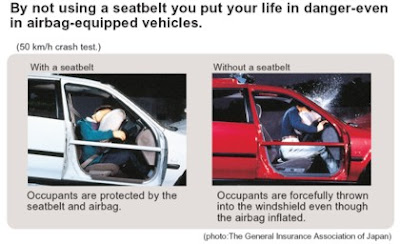
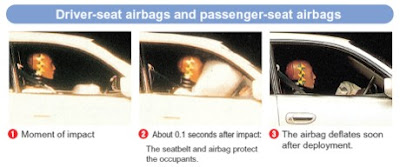
SRS Air bag is designed to inflate and deflates in just a matter of seconds from the activation during collisions, does provides protection to a driver or passenger's head during impact to keep out from hitting interior part of a car, SRS Air Bag and Seat Belts together, provide occupants with more effective protection.
SRS Air Bag consist of two types, the conventional mechanical air bags and the electronic air bags, which is commonly use mostly by the current model of car's because of its faster reaction upon collision.
Electronic air bag system composed of Spiral cable, sensor unit and air bag module. At normal conditions, when the ignition is turned on, warning light will come on momentarily on the instrument panel, then turn off.
If after turning the ignition on and warning light does not come on, or remains lit or continues to flash, then a malfunction has occurred. In any case have the airbag be checked by your mechanic. Remember this SRS Air Bag warning:
Do not sit too close to your car steering wheel and dashboard.
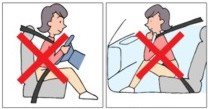
Do not attached stickers on your car steering wheel or dash board this might obstruct the SRS air bag when inflating.
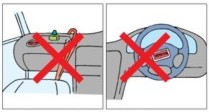
ABS or short term for Anti-lock Braking System is one of the safety equipment of most vehicle model now a days, its purpose is to prevent wheel lock up in case a sudden application of vehicle brakes occurred and stabilizes direction of vehicle movement and steering controllability during hard braking.
While ABS assists with the direction and steering during emergency braking, there are also limits. ABS does not eliminate the danger of an accident and it is still possible to get into unexpected accidents. Even with ABS be sure to drive safely by slowing down and maintaining a safe distance from the vehicle in front of you.
Having ABS in your vehicle will not shorten braking distance. In fact ABS vehicle may take slightly longer to stop than the non-ABS vehicle depending on the following road conditions.
Braking over seams or other uneven surfaces in the road
Braking on bumpy, stoned pave, or other poor-condition roads
Braking on road with gravel or fresh snow
Braking with snow chains attached
Same with other vehicle equipment ABS also need a correct application to function properly the way it supposed to be.
How to correctly apply brakes on vehicle with ABS?
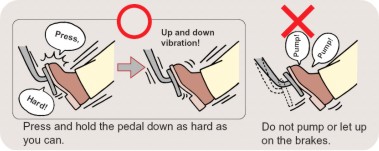
Step hard on brake pedal, when you need to suddenly brake press and hold the brake pedal as hard as you can, because strong and steady pedal pressure is required for ABS to work properly. During braking you may feel fine vibrations in the pedal and hear noise, but this noise and vibrations are normal which means the ABS is functioning properly, just keep applying strong pressure to the pedal.
As we all know a seat belt is not just to protect the drivers but also passengers, it secures us into our seats in the event an accident happens that is why if we do not wear seat belts we put our selves into risk, but do you know that wrong usage of seat belts may resulted in an injuries or even might not function as it supposed to be. Just as any other device seat belts also have correct positioning to follow.
